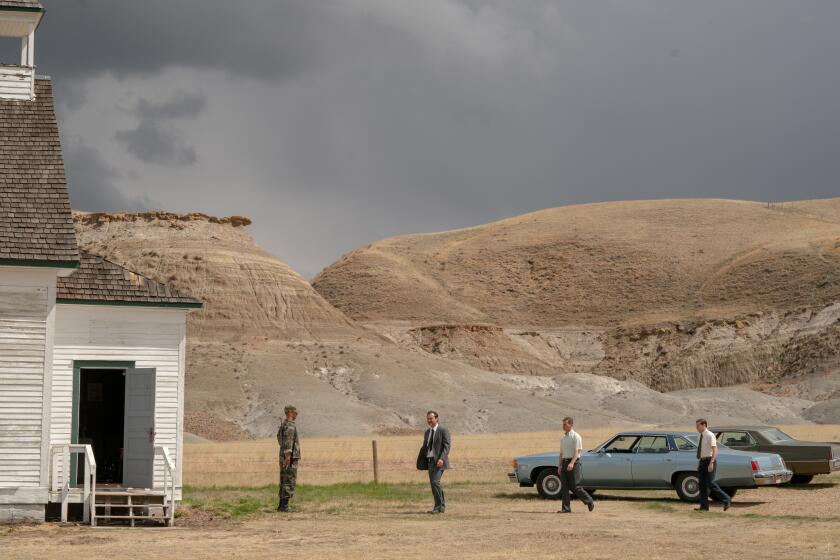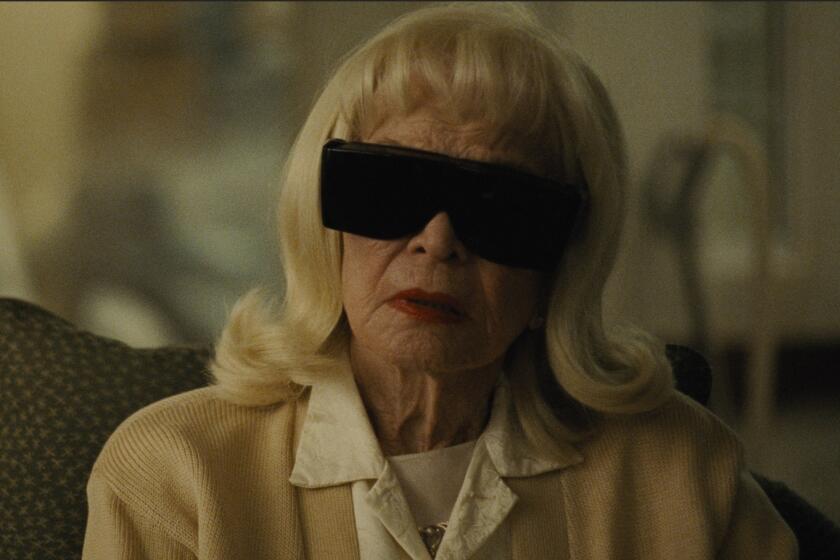Year in Review: Daring films lifted the artform in 2014
Like voices crying in the wilderness — rising above that vast wasteland of movie mediocrity — came the roar of the auteurs in 2014. A rangy group with varying aesthetics, they’ve left an indelible imprint on cinema despite the 400 or so of the marginal that clogged our theaters and muddled our brains.
Singular filmmaking voices emerge every year, startling us with their ingenuity. But this year they reached critical mass, roiling the status quo. Whether the budgets were minuscule, sufficient or sizable, these barbarians at the gate broke it down, cutting deep tracks across the existing landscape in every genre. That the daring are gaining traction in such numbers is more than reason to celebrate the year in pictures.
Some are in the heat of the race for Oscar’s imprimatur. Others blew through a few theaters before moving on to their DVD and cable runs, leaving it to the rest of us to give them their due. Here’s how I like to think of them:
Let’s start with “The Scintillating Showstoppers,” filmmakers whose ambitions played big: Christopher Nolan went sentimentally otherworldly but stayed smart in “Interstellar.” Alejandro G. Iñarritu took his facility with magical realism to new heights in cutting celebrity culture down to size in “Birdman.” Wes Anderson built a towering and beautifully balanced house of cards in “The Grand Budapest Hotel” that was as remarkable for its amusing imagery as its interlocking story.
There were “The Intimates,” tightening their focus on the often unremarked details of personal tribulations and transitions: In “Boyhood,” Richard Linklater reenvisioned how a narrative movie might be shot, filming off and on over the years minute and monumental changes in a boy, his family, social dynamics. James Gray put the fate of one refugee among the Ellis Island masses in “The Immigrant” in the hands of a carney and exposed the emerging American habit of building success on the sweat of others.
J.C. Chador keeps shifting between creating thrillers out of extensive conversations and silence, with natural forces taking over. Talky in “Margin Call,” quiet in “All Is Lost,” his “A Most Violent Year” represents a melding. His peppery exchanges dangerous in dancing around mob double-dealing, the silences more potent. Meanwhile, Tim Burton’s gone more introspective and emotional than usual in “Big Eyes.” He’s concentrated his efforts on the story of an artist, rather than being the artist himself. More “Ed Wood” than “Alice in Wonderland.”
Landing fierce, well-placed punches were “The Provocateurs”: Ava DuVernay makes “Selma” distinctive with a precision cut, using events from a moment in time to distill a larger-than-life personality, the Rev. Martin Luther King, without diminishing his legacy. Damien Chazelle took the very idea of an artistic gift, in this case “Whiplash’s” aspiring jazz drummer, and put it through a brutal meat grinder of an education.
Bennett Miller’s crushing “Foxcatcher” picked at a similar theme in the shaping of Olympic-level wrestling competitors, overlaying the “training” humiliations with the devastating implications of repressed sexuality. Ruben Ostlund’s icy “Force Majeure” used an avalanche to poke around in the fissures of a marriage and the failures of decent people. Pawel Pawlikowski’s soul-searching “Ida” and John Michael McDonagh’s faith-testing “Calvary” used religious orders to make belief painfully relevant. Craig Johnson’s fascination with the legacy of suicide is fearlessly teased out in the strange and unsettling “The Skeleton Twins.”
Redefining the fear factor were the “Maelstrom Maestros”: Jennifer Kent made a storybook monster and a depressed mother’s rage come horrifyingly alive in “The Babadook.” California-based Ana Lily Amirpour drew on her Iranian ancestry and filtered impressions of the country to create “A Girl Walks Home Alone at Night,” a feminist vampire tale that was ravishing. Jonathan Glazer’s eerie “Under the Skin” made the idea of a sci-fi alien invasion a seduction so audacious you dared not look away. Alain Guiraudie’s thrilling, chilling “Stranger by the Lake” used summer cruising and one conflicted gay man to examine the line between love and lust.
With twists on the lighter side were “The Precociously Playful”: Paul Thomas Anderson’s pot-infused “Inherent Vice” brought the beach culture of Southern California in the ‘70s to incredible highs in a blend of intellect and drugs inspired by novelist Thomas Pynchon. Chris Rock used his biting brand of comedy in “Top Five” to slice and dice fame, fans, romance and social media with amusing, stinging insight. Gillian Robespierre was comfortable making us uncomfortable using stand-up comedy as a stage for discussing abortion and early adulthood in “Obvious Child.”
James Gunn’s squirrelly “Guardians of the Galaxy” played off all the sci-fi action fantasy conceits in the entire galaxy I think to create some of the most big-movie fun we’ve had in years. Meanwhile, Phil Lord and Christopher Miller took full advantage of the power of wordplay and puns to build “The Lego Movie,” setting a new standard of play in blending inventive adult-centric ideas with kid-pleasing animation.
Some of these auteurs such as Burton, Nolan, Iñarritu, the unrelated Andersons, Glazer and Pawlikowski have been around for years. Others like Kent, Amirpour and Robespierre are only just getting their feet wet. None did it alone, as the actors and crews met or exceeded what the filmmakers asked of them.
But each film began as the glimmer of an idea in someone’s eye. In 2014, the ideas flourished, changing the game and renewing the always-endangered promise of film.
More to Read
Only good movies
Get the Indie Focus newsletter, Mark Olsen's weekly guide to the world of cinema.
You may occasionally receive promotional content from the Los Angeles Times.











